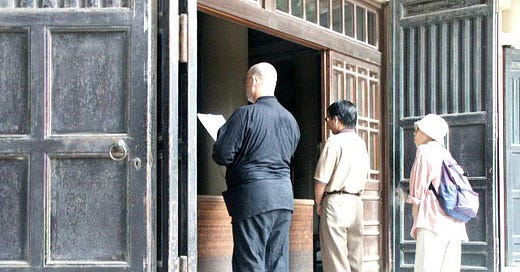Ep. 071: Temples along the Old Tokaido, Part I
Seven temples visited in Tokyo and Kanagawa Prefectures in September, 2001
As mentioned in Episode 036, in the fall of 2001, I took a ten-week, thousand-mile-plus journey, starting out from Tokyo on foot. In the more recent Episode 069 I shared some of my journal entries from that trip. Now I'll share some photos of the first few temples I visited along the way, in this episode of--
TEMPLE TALES!




